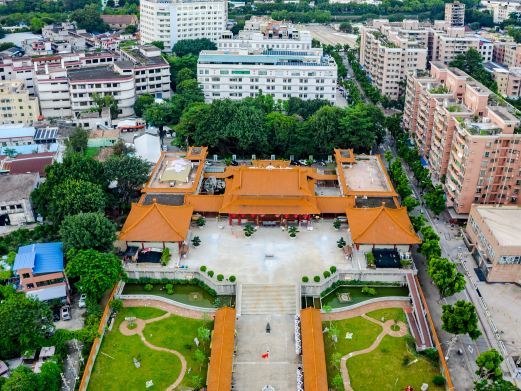In the late Qing Dynasty and early Republic of China, there were more than 30 large and small gardens in Huadi, Fangcun. Especially the eight famous gardens such as Zuiguan Garden and Liufang Garden were relatively famous. Among them, Zuiguan Garden covers nearly 1 hectare and is located on the side of Shancun Bridge on Fangcun Avenue today. After the Japanese army invaded Guangzhou, the gardens were destroyed.
In the 1950s after the founding of the People’s Republic of China, the surviving gardens such as Zuiguan and Liufang were merged on the site of Zuiguan Garden to become Zuiguan Garden. After renovation, the park’s appearance and landscape have undergone great changes. Now the total area of the park is 36,000 square meters. Among them, the area of two small artificial lakes in the park is 3,500 square meters, the green area is nearly 25,000 square meters, and the garden building area is 1,030 square meters. The whole park is composed of Mingmu Garden, Flower Garden, Bonsai Garden and children’s activity and amusement area. Ornamental fish and domestic fish are stocked in the artificial lake for tourists to watch or fish. The planted flowers and trees mainly include Yutangchun, lotus, magnolia, Michelia alba, sapodilla and mango and other flowers and trees with Lingnan characteristics. The rest corridor of Mingmu Garden is located between Mingmu Garden and the tea appreciation pavilion. The design of Chinese gardens tends to be introverted and will not be completely exposed at a glance. The corridor is a passage connecting buildings in the garden. It can not only provide shade and shelter from rain, but also act as a scenic tour guide line, allowing tourists to enjoy the scenery through the space between the pillars. The children’s amusement park is close to the entrance of the scenic spot. It covers a small area and is small and exquisite. It has conventional children’s amusement facilities such as amusement parks, skating rinks, trampolines and small trains. Open all year round from 6:00 to 19:00.Zuiguan Park
In the late Qing Dynasty and early Republic of China, there were more than 30 large and small garden[...]









